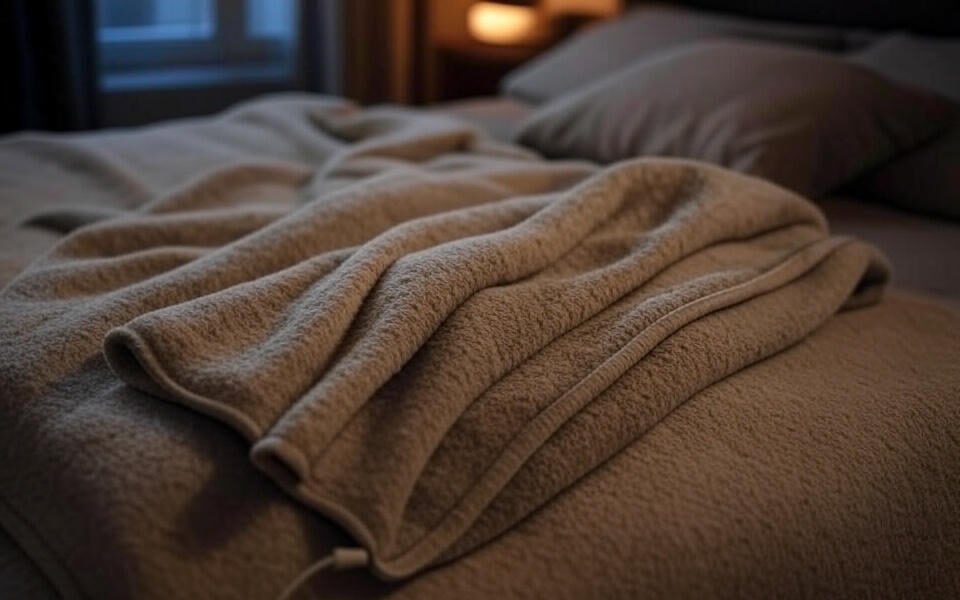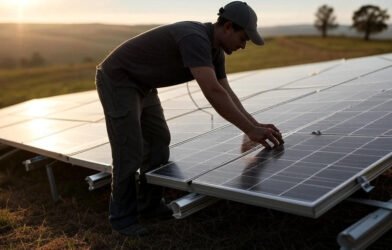People often turn to electric blankets when winter sets in to stay warm without raising the heat throughout the house. These devices deliver heat exactly where it’s needed making them a handy choice. You might worry about how they affect your energy bill. It dives into the details of their electricity usage using recent information and practical insights to give you clear answers. Electric blankets have become a go-to option for their ease and ability to save energy. Unlike room heaters that warm every corner they focus heat on your body. This can lower the total power used at home. Recent findings suggest many models use less electricity than people think. With energy costs on the rise, understanding this helps you choose smartly.
Understanding Electric Blankets
Electric blankets offer a simple way to handle cold nights. They weave heating elements into soft fabric, bringing comfort to users. People value them for preheating beds or keeping warmth throughout the night.
Definition and Purpose
An electric blanket is a bedding piece with wires inside that produce heat using electricity. Its main job is to keep you warm while you sleep or relax. Most are used in bedrooms, though some work great on couches too.
Types of Electric Blankets
You can find different kinds to match various needs. Overblankets sit on top of your sheets like a regular cover. Underblankets go under the sheets to heat from below. Heated throws provide a portable option for use anywhere.
Overblankets vs. Underblankets
Overblankets give direct warmth to your skin. They tend to feel softer and are easier to move around. Underblankets heat the mattress for a cozy feel when you get into bed. Each type changes power use a bit depending on how well they hold heat.
How Electric Blankets Work
Electric blankets use straightforward technology to provide warmth. Wires within the fabric carry electricity to create heat. You can adjust the temperature with controls to suit your preference.
Heating Mechanism
Thin wires inside the blanket warm up when plugged in. The heat spreads evenly across the surface. Special materials inside stop it from getting too hot keeping it safe to use.
Temperature Controls and Settings
Newer blankets come with digital controls offering several heat levels. Lower settings use less power for a gentle warm feeling. Higher settings take more electricity to heat up faster. Timers and auto-shutoff features make them easier to manage and save energy.
Role of Thermostats
Thermostats built into the blanket check the temperature and keep it steady. They turn the power on and off as needed. This helps us use electricity more efficiently over time.
Advanced Features
Some blankets have dual zones so couples can set different temperatures. Wireless remotes let you change settings without leaving bed. These additions can affect how much power the blanket uses, depending on how you put them.
Factors That Affect Electricity Usage
Several things decide how much power an electric blanket needs. Knowing these helps you control costs better—the size and settings you choose matter most in everyday use.
Wattage Rating
Wattage tells you how much power the blanket requires. Most fall between 50 and 150 watts on typical settings. Higher numbers mean more energy per hour. Look at the product label to find the exact amount before buying.
Blanket Size and Design
Bigger blankets cover more space and need extra power. A twin-size might use 50 to 70 watts. Queen or king sizes can go up to 100 to 150 watts or more. The way the blanket is made like a thicker fabric also plays a role in efficiency.
Impact of Materials
The fabric affects how well the blanket holds heat. Fleece or wool blends keep warmth better than cotton. Good insulation means you can use lower settings cutting down on power use.
Age and Condition
Older blankets might not work as well over time. Worn-out wires or faulty controls can cause uneven heating. Checking them regularly keeps them running smoothly and safely.
Heat Settings and Duration
Higher heat levels need more electricity. Lower settings work fine for milder nights and save power. How long you leave it on adds up the total energy used each time.
Environmental Factors
The room’s temperature affects how much you rely on the blanket. Colder rooms push you to use higher settings. Drafty areas might need the blanket on longer to feel comfortable.
Ambient Temperature Effects
In places with mild weather, blankets use less power. Very cold conditions make you depend on the highest heat. Good insulation at home works with the blanket to use less energy.
User Habits
The way you use bedding makes a difference. Adding extra blankets traps heat, letting you lower the setting. Preheating the bed for a short time uses less power than running it all night.
Calculating the Cost
Working out the cost to run an electric blanket is easy. Start with the wattage and your local electricity rate. Multiply by the hours you use it to get a daily amount.
Per Hour and Per Night Expenses
At 100 watts and a rate of $0.13 per kWh, one hour costs about 1.3 cents. An eight-hour night comes to around 10 cents. These small amounts make blankets a good choice for saving money.
Monthly and Annual Projections
Using it daily adds up to about $3 a month under normal conditions. Over a year, with seasonal use, it stays under $20. Adjust these figures based on your habits for accuracy.
Regional Rate Variations
Electricity prices change by area. Cities might charge more than rural spots. Check your utility bill to get the exact rate where you live.
Cost-Saving Strategies
Set a timer to limit how long it runs. Pair this with smart habits to save the most. Use a smart plug to track usage and see where you can cut back.
Tips to Minimize Usage
Good habits can lower electricity use even more. Start with the right setup and care. Small adjustments pay off over time. Pick models known for energy savings. Warm the bed for a few minutes before sleeping. Wear layers to avoid needing high settings. Keep the blanket clean to maintain its efficiency. Follow the care instructions when washing. Store it properly when not in use to make it last longer.
Safety Precautions
Unplug it when you’re done. Don’t fold it while it’s still warm to avoid wire damage. Replace it if it’s over 10 years old. Watch for odd smells or hot spots. Use it only on flat surfaces. These steps keep it working safely.
Environmental Benefits
Electric blankets help reduce your carbon footprint. Their low power use means less strain on the grid. New models often use materials that are kinder to the planet. By cutting down on home heating, they use less fossil fuel. They work well with renewable energy sources. Those who care about the environment find this a big plus.
Conclusion
Electric blankets provide a budget-friendly way to stay warm with little electricity. They usually draw 50 to 150 watts costing just cents per night at typical rates. Things like size settings and how long you use them shape the total power. Compared to other heaters, they offer better efficiency and savings. With good care and smart use, you can enjoy warmth while keeping your bills low. This makes them a great pick for the cold months ahead.














